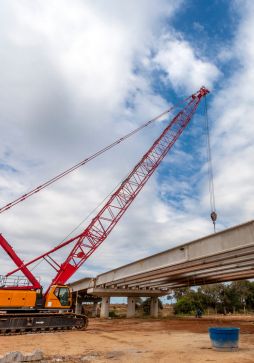Data analytics has emerged as a powerful tool to optimize product offerings and enhance overall efficiency. By leveraging analytics, companies can make data-driven decisions that improve product performance, streamline operations, and drive better outcomes. According to Building Radar, early identification of construction projects using AI-driven analytics provides valuable insights that can significantly impact product development and marketing strategies. As highlighted by PlanRadar, analytics plays a crucial role in shaping decision-making processes in construction.
Understanding how to apply analytics effectively is key to staying competitive. Linarc underscores the importance of integrating analytics into construction management to gain actionable insights. Tools like Building Radar support this by offering comprehensive project data, which helps companies optimize their product offerings. Additionally, Tread.io emphasizes the transformative power of data analytics in improving operational efficiency and decision-making.
The Role of Analytics in Construction
1. Enhancing Product Development
Data analytics enables construction companies to refine their product offerings by identifying trends and understanding customer needs. PixelPlex notes that analytics can pinpoint areas for improvement in product design and performance. By utilizing tools like Building Radar, companies can access real-time data to inform product development decisions. This allows for more targeted innovations that meet market demands and enhance overall competitiveness.
Analytics also plays a vital role in reducing waste and improving sustainability. Avvir highlights how data-driven insights can lead to more efficient use of materials and resources, ultimately reducing costs. Building Radar supports this by offering tools that track material usage and project outcomes, helping companies optimize their product offerings for sustainability.
2. Improving Marketing and Sales Strategies
Analytics helps construction companies fine-tune their marketing and sales strategies by providing insights into customer behavior and preferences. CIC Construction explains how data analytics can identify target markets and customer segments, enabling more effective marketing campaigns. Building Radar enhances this by offering AI-driven recommendations that guide sales teams towards the most promising projects, increasing conversion rates and sales efficiency.
By analyzing customer data, companies can tailor their marketing messages and product offerings to meet specific needs. Fieldwire notes that analytics can help in understanding customer pain points and preferences, leading to more personalized and effective marketing strategies. Building Radar provides tools that integrate seamlessly with CRM systems, ensuring that sales teams have access to the latest customer insights for more targeted outreach.
Best Practices for Using Analytics in Construction
1. Collecting and Managing High-Quality Data
The foundation of effective analytics is high-quality data. Rhumbix emphasizes the importance of accurate and comprehensive data collection for meaningful insights. Building Radar offers tools that ensure reliable data collection and management, providing a solid basis for analysis. By maintaining clean and organized data, construction companies can derive more accurate insights and make better decisions.
Effective data management also involves integrating data from various sources to create a holistic view of the project. Kreo highlights the benefits of integrating data across different platforms to enhance analytics capabilities. Building Radar supports this with its seamless integration features, allowing companies to consolidate data and gain a comprehensive understanding of their projects.
2. Leveraging Predictive Analytics
Predictive analytics is a powerful tool for anticipating future trends and outcomes. PlanRadar discusses how predictive analytics can help construction companies forecast demand and plan resources more effectively. Building Radar enhances predictive capabilities by providing early project identification and AI-driven insights, allowing companies to stay ahead of market trends and customer needs.
By using predictive analytics, companies can identify potential risks and opportunities, enabling proactive decision-making. Tread.io highlights the role of predictive analytics in improving project outcomes and minimizing risks. Building Radar supports this by offering tools that provide real-time project data and analytics, helping companies anticipate and respond to changes effectively.
Building Radar’s Contribution to Analytics in Construction
Building Radar plays a pivotal role in enhancing analytics capabilities in the construction industry. Its AI-driven technology provides early identification of construction projects, offering valuable insights that help companies optimize their product offerings. By delivering real-time project data and predictive analytics, Building Radar enables companies to make data-driven decisions that improve product performance and customer satisfaction.
Additionally, Building Radar’s scalable Revenue Engineering Software helps turn project insights into measurable revenue. The platform’s integration features allow for seamless data consolidation, providing a comprehensive view of project performance. By supporting both digital and analogue skills development, Building Radar empowers sales teams to leverage analytics effectively, resulting in higher conversion rates and better project outcomes.
Conclusion
Using analytics to optimize construction product offerings is essential for staying competitive in a rapidly evolving industry. By enhancing product development, refining marketing strategies, and leveraging predictive analytics, construction companies can improve their operations and achieve better outcomes. Building Radar provides the tools and insights needed to harness the power of analytics, supporting companies in making data-driven decisions that drive success.









